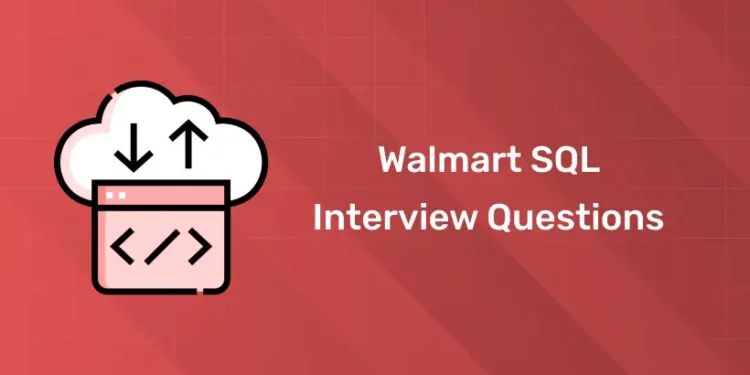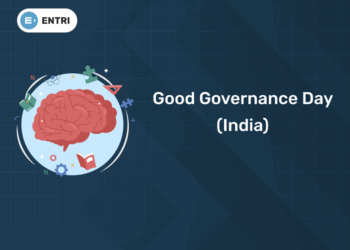Table of Contents
Preparing for a Walmart SQL interview can be a game-changer for your career, whether you’re aiming for a data analyst, database developer, or software engineering role. Walmart, as a global retail giant, relies heavily on data to make informed decisions, and SQL (Structured Query Language) is a critical tool used to manage and analyze this data. In this blog, we’ll dive into some of the most common and challenging SQL interview questions that Walmart asks during its interview process. These questions cover a wide range of SQL topics, from basic queries and joins to advanced concepts like performance optimization, data manipulation, and database design.
Learn Full Stack Development with expert mentors! Get Free Demo Here!
Introduction
Walmart is a multinational retail corporation that operates a chain of hypermarkets, discount department stores, and grocery stores. Headquartered in Bentonville, Arkansas, it was founded by Sam Walton in 1962. Walmart has since grown to become the world’s largest company by revenue, with more than 11,000 stores and clubs in 27 countries under various names.
Key Highlights:
- Founded: 1962 by Sam Walton.
- Headquarters: Bentonville, Arkansas, USA.
- Global Presence: Operates in 27 countries, including the U.S., Canada, Mexico, China, India, and others.
- Business Model: Walmart operates primarily through brick-and-mortar stores but has expanded heavily into e-commerce, making it a key player in the online retail space.
- Industry: Retail, E-commerce, Logistics.
- Workforce: Walmart is the largest private employer in the world, with over 2 million employees globally.
- E-commerce: Walmart has been growing its online presence through acquisitions (e.g., Jet.com) and expanding its digital capabilities to compete with Amazon.
- Technology: Walmart has invested heavily in technology, artificial intelligence, and data analytics to optimize its supply chain, improve customer experiences, and build its e-commerce business.
Why Join in Walmart as a SQL Developer?
Joining Walmart as a SQL Developer can offer a variety of compelling opportunities, making it an attractive choice for professionals in this field. Here are some reasons why joining Walmart as a SQL Developer might be a great career move:
1. Work with Large-Scale Data
Walmart handles massive amounts of transactional and operational data daily across its global retail operations. As a SQL Developer, you’ll get to work with large-scale, complex datasets, providing valuable insights that directly impact business decisions.
2. Impact on Global Operations
Walmart is the largest retailer in the world, with operations spanning multiple countries. Your work as a SQL Developer will influence how data is processed and utilized to optimize supply chain efficiency, pricing strategies, customer behavior analysis, and more. This gives you a chance to make a significant global impact.
3. Cutting-Edge Technology
Walmart heavily invests in technology to remain competitive in the e-commerce and retail industries. As a SQL Developer, you’ll likely be working with the latest database technologies, cloud platforms (like Azure, AWS), and advanced data engineering tools to manage and optimize data infrastructure.
4. Cross-Functional Collaboration
Walmart’s business operations rely on data to drive decision-making across various departments, including marketing, sales, logistics, finance, and customer service. As a SQL Developer, you’ll have opportunities to collaborate with different teams, including data analysts, software engineers, and business leaders, expanding your professional network and skill set.
5. Career Growth Opportunities
Walmart is known for its focus on employee growth and development. With its large and diverse technology teams, you’ll have plenty of opportunities for career advancement, whether you want to specialize in database management, data architecture, or move into data analytics and engineering.
6. Competitive Compensation and Benefits
Walmart offers competitive salaries and comprehensive benefits, including healthcare, retirement plans, stock options, and other incentives. As a SQL Developer, you can expect to receive a strong compensation package.
7. Innovation and Problem Solving
Walmart is at the forefront of data-driven decision-making, which means SQL Developers play a critical role in solving complex data problems. If you enjoy creating efficient queries, optimizing databases, and providing data solutions for large, dynamic systems, Walmart offers a great environment for innovation.
8. Exposure to E-commerce and Retail Data
Working at Walmart provides SQL Developers with unique exposure to e-commerce and retail data. The company is heavily invested in expanding its digital presence, and you can be part of exciting projects involving customer data analysis, inventory management, pricing models, and supply chain optimization.
Walmart Interview Preparation Tips for SQL
Preparing for a Walmart SQL interview requires a strong understanding of SQL concepts, practical experience with database management, and the ability to solve complex data problems. Here are some tailored preparation tips for excelling in a Walmart SQL interview:
1. Master SQL Fundamentals
Walmart’s data operations are vast, so a deep understanding of SQL basics is crucial. Review key concepts, including:
- Data Types: Know the different SQL data types (e.g., VARCHAR, INT, DATE, etc.) and when to use them.
- Joins: Be comfortable with inner, outer, left, right, and self-joins.
- Aggregations: Understand aggregate functions like
COUNT(),SUM(),AVG(),MIN(), andMAX(). - Group By and Having: Know how to group data and filter grouped results.
- Subqueries and CTEs: Learn how to structure subqueries and use Common Table Expressions (CTEs) to simplify complex queries.
- Indexes: Know how indexes work and how they affect query performance.
2. Practice Writing Complex Queries
Walmart’s operations deal with massive datasets, so expect questions involving complex, multi-step queries. Practice writing queries that include:
- Multiple joins.
- Nested subqueries.
- Window functions (
ROW_NUMBER(),RANK(), etc.). - Complex filtering (
WHEREandHAVING). - Advanced grouping and aggregation.
3. Optimize SQL Queries
Performance is key at Walmart, given the high volume of data they process. Be ready to:
- Analyze and optimize queries for performance using indexing, avoiding unnecessary computations, and reducing redundant joins.
- Understand how to use EXPLAIN plans to analyze query performance and find bottlenecks.
- Know how to handle large datasets efficiently and how to write queries that minimize system load.
4. Understand Database Design Concepts
You may be asked questions about designing or optimizing database schemas. Prepare by:
- Reviewing normalization (1NF, 2NF, 3NF, BCNF) to ensure database designs avoid redundancy.
- Understanding denormalization and when it’s appropriate for performance reasons.
- Knowing how to handle relationships between tables, such as one-to-many or many-to-many relationships.
- Reviewing concepts like primary keys, foreign keys, and unique constraints.
5. Prepare for Data Analysis Questions
Walmart might ask you to extract insights from data or analyze business trends. Be prepared to:
- Interpret business questions and translate them into SQL queries.
- Work with real-world datasets involving retail operations, sales, and customer behavior.
- Use SQL functions like
CASE,COALESCE, andIFNULLto handle business-specific logic. - Create summary reports, sales trends, inventory reports, and customer data analyses using SQL.
6. Brush Up on Data Warehousing Concepts
Walmart operates on a global scale, and their data operations often involve large-scale data warehousing. It’s important to:
- Understand ETL (Extract, Transform, Load) processes and how data flows from various systems into a centralized data warehouse.
- Familiarize yourself with dimensional modeling (e.g., star schema, snowflake schema) used in data warehouses.
- Be prepared to discuss data lakes and how data is stored and processed at Walmart.
7. Know SQL in a Cloud Environment
Walmart uses cloud technologies (e.g., Google Cloud, Azure, or AWS). Be prepared to:
- Discuss cloud database services like Amazon RDS, Azure SQL Database, or Google BigQuery.
- Understand how cloud databases differ from traditional on-premise databases.
- Familiarize yourself with cloud-specific optimizations, scalability, and security best practices.
8. Focus on Problem-Solving
Expect Walmart SQL interviews to focus heavily on problem-solving. This includes:
- Handling large datasets with efficient queries.
- Solving complex business problems using SQL (e.g., optimizing inventory turnover or analyzing customer purchasing patterns).
- Being able to explain your thought process clearly as you develop your solutions.
Learn Full Stack Development with expert mentors! Get Free Demo Here!
Top Walmart SQL Interview Questions and Answers
1. What is SQL?
Answer: SQL (Structured Query Language) is used to communicate with and manipulate databases. It performs tasks such as querying, inserting, updating, and deleting data.
2. What are the different types of SQL statements?
Answer: The main types are:
- DDL (Data Definition Language):
CREATE,ALTER,DROP. - DML (Data Manipulation Language):
SELECT,INSERT,UPDATE,DELETE. - DCL (Data Control Language):
GRANT,REVOKE. - TCL (Transaction Control Language):
COMMIT,ROLLBACK,SAVEPOINT.
3. Explain the JOIN operation in SQL.
Answer: A JOIN is used to combine rows from two or more tables based on a related column. Types of joins include:
INNER JOIN: Returns matching rows.LEFT JOIN: Returns all rows from the left table and matched rows from the right.RIGHT JOIN: Returns all rows from the right table and matched rows from the left.FULL JOIN: Returns all rows when there is a match in either table.
4. What is a PRIMARY KEY?
Answer: A PRIMARY KEY is a unique identifier for a row in a table. It ensures that no duplicate values exist and prevents NULL values.
5. What is a FOREIGN KEY?
Answer: A FOREIGN KEY is a field in one table that refers to the PRIMARY KEY in another table, ensuring referential integrity.
6. What is normalization?
Answer: Normalization is the process of organizing data in a database to reduce redundancy and improve data integrity. It involves breaking a large table into smaller, related tables.
7. What are the different types of normalization?
Answer:
- 1NF: No duplicate rows, and each field contains atomic values.
- 2NF: Must meet all 1NF criteria, and all non-key attributes depend on the primary key.
- 3NF: Must meet 2NF, and no transitive dependencies between non-key attributes.
8. What is denormalization?
Answer: Denormalization is the process of combining normalized tables to optimize database performance by reducing the need for joins.
9. What is the difference between TRUNCATE, DELETE, and DROP?
Answer:
DELETE: Deletes specific rows based on a condition and can be rolled back.TRUNCATE: Deletes all rows in a table but cannot be rolled back.DROP: Removes the entire table structure and its data.
10. Explain the GROUP BY clause.
Answer: GROUP BY groups rows with the same values in specified columns, allowing aggregate functions (e.g., COUNT(), SUM()) to be applied to each group.
11. What is a HAVING clause?
Answer: HAVING is similar to WHERE but operates on aggregated data, filtering results after the GROUP BY clause.
12. Explain the difference between WHERE and HAVING.
Answer: WHERE filters rows before aggregation, while HAVING filters the aggregated results.
13. What is an index, and why is it important?
Answer: An index improves query performance by allowing faster data retrieval. It works like an index in a book but can slow down data modification operations.
14. What are the different types of indexes?
Answer:
- Clustered Index: Sorts the physical data in the table.
- Non-Clustered Index: A separate structure that holds the index and points to the physical data.
15. What is a stored procedure?
Answer: A stored procedure is a collection of SQL statements that can be executed as a single function. It allows for code reuse and improves performance by reducing client-server communication.
Learn Full Stack Development with expert mentors! Get Free Demo Here!
16. What is a trigger in SQL?
Answer: A trigger is a special type of stored procedure that automatically executes in response to certain events (e.g., INSERT, UPDATE, DELETE) on a table.
17. What is a view in SQL?
Answer: A view is a virtual table based on the result of a SELECT query. It simplifies complex queries and provides security by restricting access to specific data.
18. What is a subquery, and when would you use it?
Answer: A subquery is a query within another query. It is used when you need to filter data based on results from another query.
19. What is the difference between UNION and UNION ALL?
Answer:
UNION: Combines the result sets of two queries and removes duplicates.UNION ALL: Combines the result sets of two queries without removing duplicates.
20. What are ACID properties?
Answer: ACID properties ensure reliable transactions in databases:
- Atomicity: Transactions are all or nothing.
- Consistency: Ensures database integrity before and after a transaction.
- Isolation: Ensures transactions do not interfere with each other.
- Durability: Once a transaction is committed, it remains so.
21. What is a SELF JOIN?
Answer: A SELF JOIN is a join where a table is joined with itself to retrieve data that is related to itself.
22. What is a CROSS JOIN?
Answer: A CROSS JOIN returns the Cartesian product of two tables, meaning it pairs each row of the first table with every row of the second table.
23. Explain the use of the EXISTS keyword.
Answer: EXISTS checks for the existence of rows returned by a subquery. It is commonly used for checking if a subquery returns any data.
24. What are aggregate functions in SQL?
Answer: Aggregate functions perform a calculation on a set of values and return a single value. Common examples include SUM(), COUNT(), AVG(), MIN(), and MAX().
25. What is a cursor in SQL?
Answer: A cursor is a database object that allows row-by-row processing of query results. It is useful for operations that require iterating over query results one row at a time.
26. What are window functions?
Answer: Window functions perform calculations across a set of table rows related to the current row without collapsing rows into a single result. Examples include ROW_NUMBER(), RANK(), and DENSE_RANK().
27. What is a transaction?
Answer: A transaction is a sequence of one or more SQL operations that are treated as a single unit. A transaction ensures that either all operations succeed, or none do, following the ACID properties.
28. What is a common table expression (CTE)?
Answer: A CTE is a temporary result set defined within a WITH clause that can be referenced within the main SELECT, INSERT, UPDATE, or DELETE query.
29. How do you optimize SQL queries?
Answer:
- Use proper indexes.
- Avoid
SELECT *and retrieve only the necessary columns. - Minimize subqueries and use joins when appropriate.
- Use
EXPLAINto analyze query execution plans.
30. What is the difference between RANK(), DENSE_RANK(), and ROW_NUMBER()?
Answer:
ROW_NUMBER(): Assigns a unique number to each row, without regard for ties.RANK(): Assigns ranks, leaving gaps in case of ties.DENSE_RANK(): Assigns ranks without gaps in case of ties.
Learn Full Stack Development with expert mentors! Get Free Demo Here!











